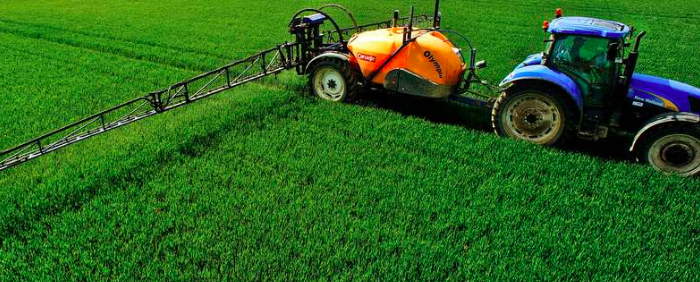
What happens to nitrates resulting from the application of synthetic nitrogen fertilizers on our crops? A study conducted over 30 years has just provided figures that challenge. For example, fertilizer applied in 1982 is expected to be involved in the contamination of aquatic systems for five decades. Obviously, the soil holding capacity has been underestimated.
To improve plant growth, and thus yield and crop quality, farmers have been enriching their soils with synthetic nitrogen fertilizers for decades. The problem is that a good part of the nitrates derived from these products seeps into the basement, where it then participates in the contamination of groundwater (sometimes including water tables exploited to supply the population with water drinking). In France, the pollution of continental waters by nitrates is 66% due to agriculture (CNRS figure).
Many efforts are being made to reduce this pollution , both by farmers and the authorities. However, there are still gray areas on the fate of products spread on our fields. For example, what exactly, and in what quantities, do fertilizers and their residues become over time over a period of several decades? New elements of answers have just been provided in a study presented in the journal Pnas , by Mathieu Sebilo of the University Pierre and Marie Curie (Paris) as the main author.
30 years ago, in 1982, 2 plots of 2 m² were enriched with a synthetic nitrogen fertilizer, but not just any one. It had previously been labeled with a stable nitrogen isotope : the 15 N. Since then, sugar beet (summer) and wheat (winter) crops have succeeded each other on these lands , while isotopic measurements have been carried out. regularly been taken. Thanks to them, the researchers followed the percentage of nitrates that was absorbed by the plants over time, and thus the one that infiltrated the basements or remained in the soil organic matter . Conclusion: nitrate pollutionwill continue much longer than expected!
About 15% of nitrates will end up in aquatic systems
Thus, after three decades, 61-65% of the labeled fertilizer was absorbed by the plants. And the rest? Measurements were also carried out on infiltration water taken at two meters depth. Thanks to them, the fraction of nitrates carried to the groundwater was evaluated. By inference, it has therefore been possible to quantify the presence of labeled nitrates in the soil , where they are still accessible to plants. Three years after the beginning of the experiment, in 1985, the soils still contained 32 to 37% of the fertilizer traced, against 12 to 15% today. It means to say if it remains long!
Between 8% and 12% of the labeled fertilizer residues would have infiltrated into the subsoil during the last 30 years, and could therefore have contributed to the contamination of water resources . According to the study, this gradual flow should continue in the coming decades. Indeed, researchers estimate that nitrates will still flow at low doses for more than 50 years, longer than previously thought. By 2082, about 15% of the fertilizer labeled in 1982 will have entered the hydrosphere , according to estimates.
These figures are far from negligible. They show that the soil holding capacity , which has received significant amounts of fertilizer in a few decades, has been underestimated. Therefore, this should be better reflected in efforts to reduce the contamination of aquatic systems by agricultural fertilizers.